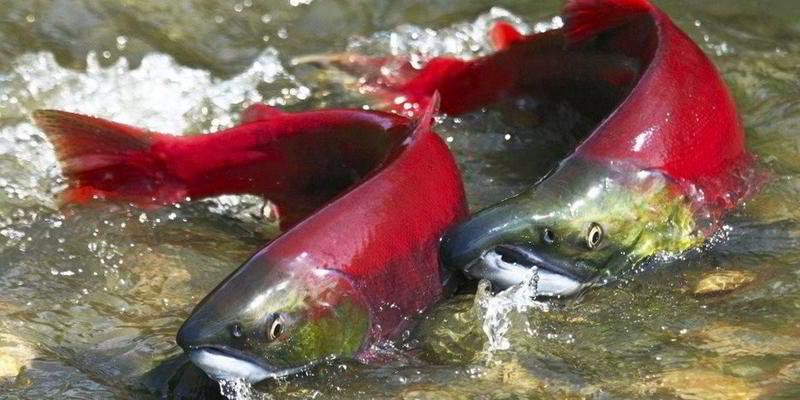Many scientists are looking into how different species will respond to climate change to predict the impacts of global change on biodiversity. When scientists trying to forecast the future of a specific species, they often use environmental information from that species' environment, such as current temperature or geographic range. But, in cases where a species resource – like nutrients and food availability - is also having a response to temperature increase, the predicted impact of warming on the species may be inaccurate. For species experiencing both temperature increases and a decline in resources, there may be an enhanced risk to that species as a result of climate warming that would not otherwise be predicted by looking at the impact of temperature alone.

Salmon are one of the species who's response to climate change depends on the interaction between temperature change and food availability
To help fill this knowledge gap, Anna Vinton – NSF Fellow at the Department of Biology – with David Vasseur from Yale, developed mathematical models to create new theory to assess species risk of extinction due to temperature change, which takes into account predicted resource availability.
Their work, published in the journal Ecology Letters, shows the importance of jointly considering temperature and resource availability when assessing the response of a species to climate change.
In their model they found that, when consumer and resource dynamics were linked, the potential for a resource decline to exacerbate the effects of warming on a species was reduced. However, if resources are more sensitive to warming, consumer response to temperature can be reshaped by declining resources, leading to increased extinction risk.
"This work predicts that consumers thermal maximum and minimum both change in response to the availability of their resources. Where we expect resources to be more limiting, for example when temperature increase causes drought, thereby reducing the availability of grass for herbivores, thermal safety margins will need to be greater to ensure that consumers (here herbivores) persist."
Dr Anna Vinton
This combination of theory and mathematical modelling can be applied to several real-world scenarios. In resource-fed systems such as rivers and lakes, nutrient input from anthropogenic sources, such as fertilizer runoff, may actually widen the range of temperatures over which algae and bacteria can achieve population growth. This may help identify the causes of nuisance or toxic algal blooms and identify opportunities for mitigation.
They hope that this generalizable framework for a mechanistic link between the role of temperature change, resource availability and species interactions can help further identify gaps in our understanding of thermal responses, and takes a vital step toward improving forecasts of community response to climate change.
To read more about this research, published in Ecology Letters please visit: https://onlinelibrary.wiley.com/doi/full/10.1111/ele.14086